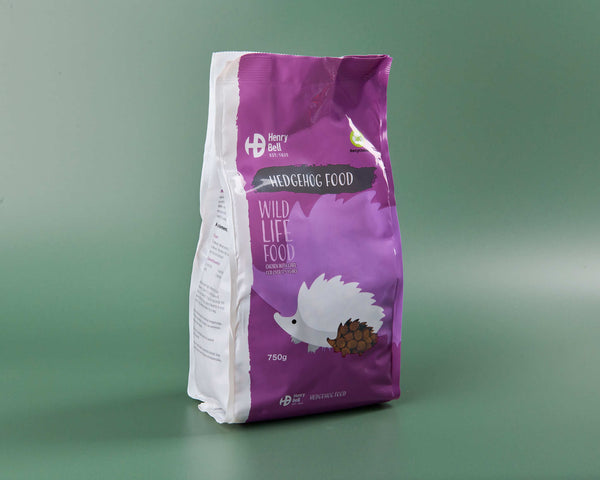A Guide: How to Support Hedgehogs After Hibernation
Spring is well and truly here, and Hedgehogs are out and about, having woken up from their long winter slumber in early April. When they wake, they are hungry, thirsty, and in need of a little help.
Since the millennium, the number of Hedgehogs in urban areas has fallen by 30%, which means it’s important for us to do everything we can to create a safe space in our gardens and local green spaces, for our spiky friends.
From knowing which food is best for them to avoiding unknowingly creating dangers for these mammals, we’ve got you covered when it comes to looking out for hedgehogs after hibernation.
Waking Up in Spring
Throughout Autumn and Winter, hedgehogs hibernate; during this time, they rely on fat reserves to keep them alive, and their body functions slow dramatically to conserve energy. With climate change, a mild winter or no food sources beforehand can make survival difficult.
In early April, air temperatures rise and the hours of daylight increase, and finally, it’s time for Hedgehogs to wake. If there aren’t enough resources available, they may struggle to regain enough strength to survive.
With fat reserves depleted, and natural food like worms, beetles, and caterpillars hard to find, they need a lot of support. High protein food, fresh water, and safe shelter will help make their chances of survival greater.

Even small actions can help these vulnerable creatures recover after their winter sleep and keep them safe as they explore, feed, and prepare for the rest of the year.
Why do Hedgehogs Hibernate?
Winter months usually mean the food Hedgehogs love to eat is scarce, so they hibernate. To conserve energy, hedgehogs enter a state of torpor, where their body temperature, heart rate, and metabolism drop dramatically.
This helps them survive without eating for weeks or months, relying on the fat reserves they built up in the autumn. Hibernation ensures they can endure the harsh winter until warmer weather and food become plentiful again.
Food Fit for a Hedgehog

Hedgehogs are active from Spring through to Autumn, and during this time, finding natural food sources can be tough. While they typically forage for beetles, worms, and caterpillars, their diet can be supplemented so that they stay healthy and build up the fat reserves needed for hibernation.
What You Can Feed Hedgehogs:
-
Meaty cat food or dog food (wet or dry, poultry or meat-based - avoid fish)
-
Cat biscuits or dried hedgehog food (great for keeping teeth healthy)
-
Fresh water in a shallow dish
What to Avoid:
-
Milk can upset their digestive systems
-
Bread offers no nutritional value
-
Slug pellets are toxic to hedgehogs and other wildlife
To feed Hedgehogs, leave food out at dusk, as this is when they naturally come out to forage. If you find other animals (foxes, dogs, or cats) are stealing the food, place it under a shelter or inside a hedgehog feeding station.
Nesting Sites and Hedgehog Houses

After hibernation, Hedgehogs don’t usually stay in their original nest. Instead, they search for a new shelter. All they need is a safe, dry space to rest during the day and raise young. In modern gardens, there aren’t always lots of suitable nesting spots for these mammals.
In your garden, it’s easy to support Hedgehogs. By leaving parts of your garden wild; like piles of logs, dry leaves or sticks in quiet corners, you create ideal conditions for Hedgehogs to nest, whilst also attracting tasty insects for them to eat.
Ready-made or DIY Hedgehog houses are also a great way to provide a safe space. Place these in a quiet spot, out of direct sunlight, and partially hidden. If you can, it’s best to leave this totally undisturbed.
In the night, Hedgehogs roam up to a mile in search of food, mates, and nesting spots. To make this easier for them, create ‘Hedgehog Highways’: these are small gaps in the base of walls or fences that connect gardens, allowing these creatures to move safely through their natural range.
Hidden Dangers in Spring Gardens
As Spring ramps up, we all spend more time in our gardens, planting flowers or clearing up ready for those summer BBQs. But for Hedgehogs, some of those innocent gardening jobs can be harmful.
Try to avoid slug pellets as these are not just toxic to slugs, but to Hedgehogs and many other animals. There are so many wildlife-safe alternatives you can use.
Always dispose of plastic and litter correctly, as Hedgehogs can be curious creatures and they can become trapped in this stuff.
If you’re cutting long grass, always double-check it for Hedgehogs, as they often hide out in these spots. Make sure to check compost heaps too.
Coexisting with Other Wildlife
Creating a hedgehog-friendly garden doesn't mean excluding other wildlife. What benefits one often supports many. Providing food, water, and natural shelter helps a host of animals, from birds to insects.
Hedgehogs are a true gardener's friend, feeding on pests like slugs, beetles, and caterpillars - all without needing chemical intervention.
Creating Hedgehog-Friendly Spaces

Whether you have a large garden or a small patch of green, a few simple changes can turn your space into a vital lifeline for hedgehogs. Facing an increase in threats from habitat loss, traffic, and a lack of natural food, gardens often become safe spaces for these creatures, playing a powerful role in their survival.
Here are just some of the ways you can create a Hedgehog friendly garden.
-
A shallow dish of fresh water and meaty, non-fish cat or dog food can help hedgehogs stay healthy and build up fat reserves.
-
Log piles, compost heaps, or a purpose-built hedgehog house offer safe places to rest or raise young.
-
Swap out slug pellets for wildlife-safe alternatives to protect hedgehogs and other animals.
-
Create hedgehog highways (13cm x 13cm holes in fences) so they can roam freely between green spaces.
-
Wild corners with dry leaves, long grass, and native plants support both hedgehogs and the invertebrates they feed on.
Even small efforts can have a big impact. This spring, let’s all do our part to encourage hibernating hedgehogs and celebrate the wildlife right outside our doors.









